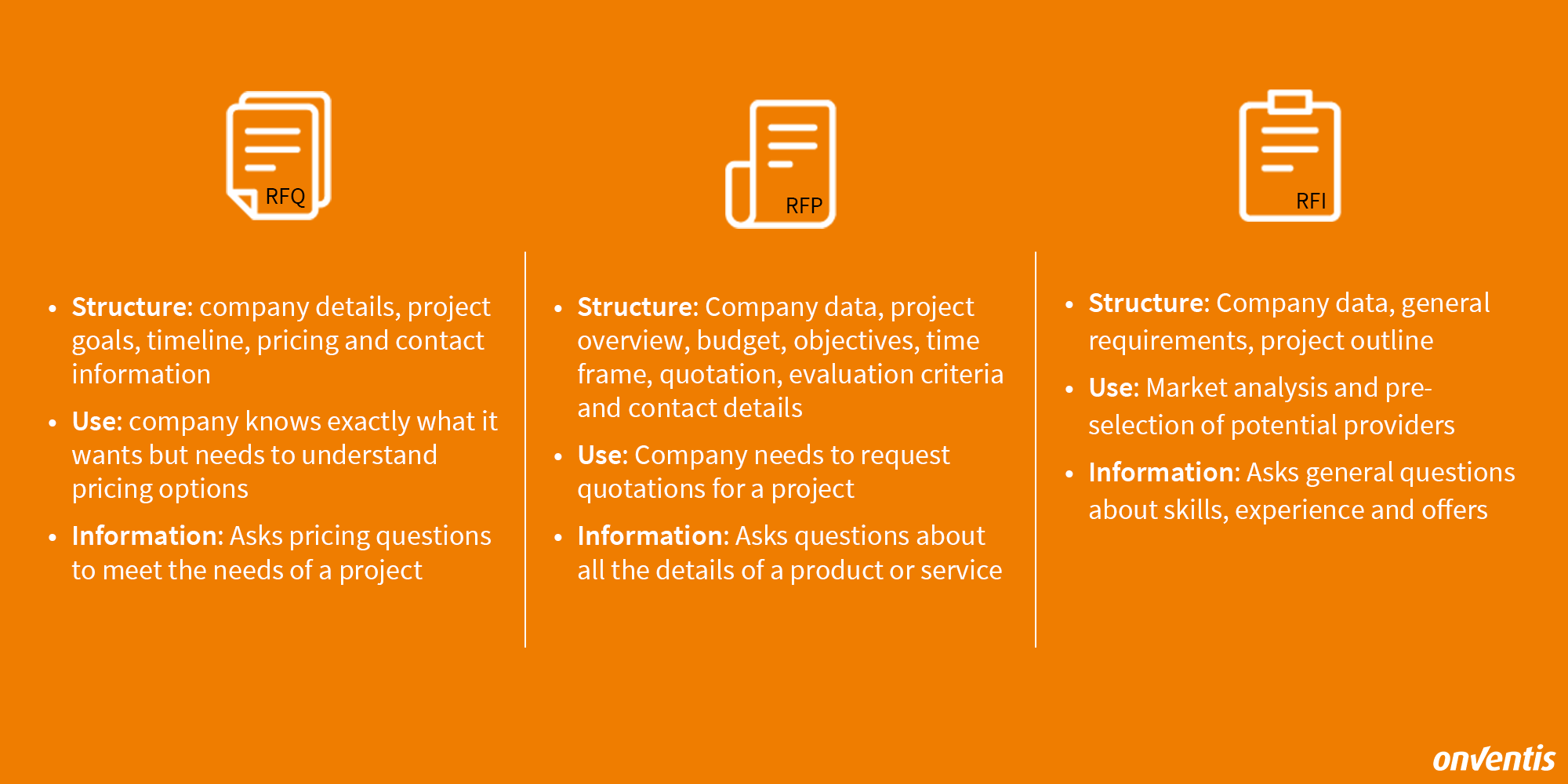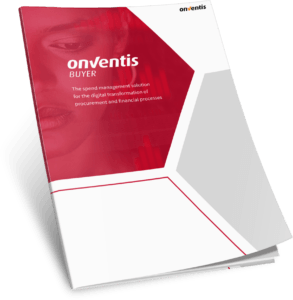RFI, RFP, RFQ: A Comparison of the RFx Process
The procurement process is much more than just buying products and services. To remain competitive and work efficiently, companies increasingly rely on digital strategies that optimize purchasing and the selection and evaluation of potential suppliers and sourcing. This is where the RFx process comes into play.

RFI, RFP, RFQ: A Comparison of the RFx Process
The procurement process is much more than just buying products and services. To remain competitive and work efficiently, companies increasingly rely on digital strategies that optimize purchasing and the selection and evaluation of potential suppliers and sourcing. This is where the RFx process comes into play.
The RFx process, which comprises the RFI (Request for Information), RFQ (Request for Quotation), and RFP (Request for Proposal) steps, forms the backbone of structured and strategic procurement. Each of these steps serves a specific purpose: from collecting basic information about the market to preparing quotations and price proposals. By applying these procedures, companies can ensure that they select the best suppliers, reduce costs, and, at the same time, increase the quality of their procurements.
The RFx process is not just a cost-cutting tool, but a strategic approach to risk mitigation, efficiency enhancement, and ultimately, ensuring the company’s competitiveness. In the following overview, we highlight the individual steps of the RFx process and underscore the significant benefits they bring to your company’s success.
RFI, RFP, RFQ defined
What is RFI?
The Request for Information (RFI) process allows companies to gather general information from potential suppliers before issuing a specific request for quotation (RFQ or RFP). An RFI is used to better understand the market supply, identify potential suppliers, and evaluate their capabilities and experience.
An RFI is not a commitment to place an order. Rather, it provides the company with a sound basis for further steps in the procurement process. By gathering information about different suppliers, companies can better define their requirements and better target the rest of the RFx process.
What is RFP?
The Request for Proposal (RFP) is a formal document used by a company to obtain detailed proposals from potential suppliers for a specific project or service. It contains comprehensive information on the project requirements, budget, objectives, timeframe and evaluation criteria. The goal is to enable the company to get the best possible bids for complex projects.
An RFP is typically used when the company is looking for a comprehensive solution and wants to evaluate both the product or service requirements and the supplier offers in detail. Questions are asked about all product or service aspects to ensure that the offer meets the company’s specific requirements.
What is an RFQ?
A Request for Quotation (RFQ) is an invitation to suppliers to submit detailed price quotations for specified products or services. Companies use an RFQ when they know exactly what they need or want to compare price quotes. It is mainly used to determine the cost of standard products or services.
The RFQ process is usually simpler and less comprehensive than an RFP because the requirements are clearly defined, and the focus is on pricing. Companies send an RFQ to selected suppliers, review the offers received, and select the supplier with the best price-performance ratio.
The importance of RFx for business success
By implementing a structured RFx process, companies can ensure that they receive the best offers from their suppliers. A formalized process encourages competition among suppliers and often leads to better prices and more innovative solutions.
As a result, companies ensure that the selected suppliers are reliable and deliver high-quality products, minimizing supplier risk while easily incorporating the best value for money into the decision.
Which request should I use? A practical comparison of the procedures
To make it easier to decide which RFx procedure best suits your company’s requirements, we have created a comparison of the different procedures:

The comparison shows that the selection process varies depending on the company’s specific requirements. While an RFQ is ideal for clearly defined projects with set requirements, an RFP is better suited for more complex projects where the company needs to obtain detailed quotes from potential vendors. On the other hand, an RFI is particularly useful in the early stages of the procurement process when the company wants to learn more about the market and potential suppliers.
Each procedure fulfills a specific function within the procurement process and helps optimize the company’s strategy. Through these procedures, companies can not only save costs, but also improve the quality of their procurements and obtain the best possible offers from their suppliers.
Digitalization is key in this scenario. Discover how you can use our technology to optimize your sourcing! Find everything you need here.
Weitere BlogsMore BlogsMeer blogs





